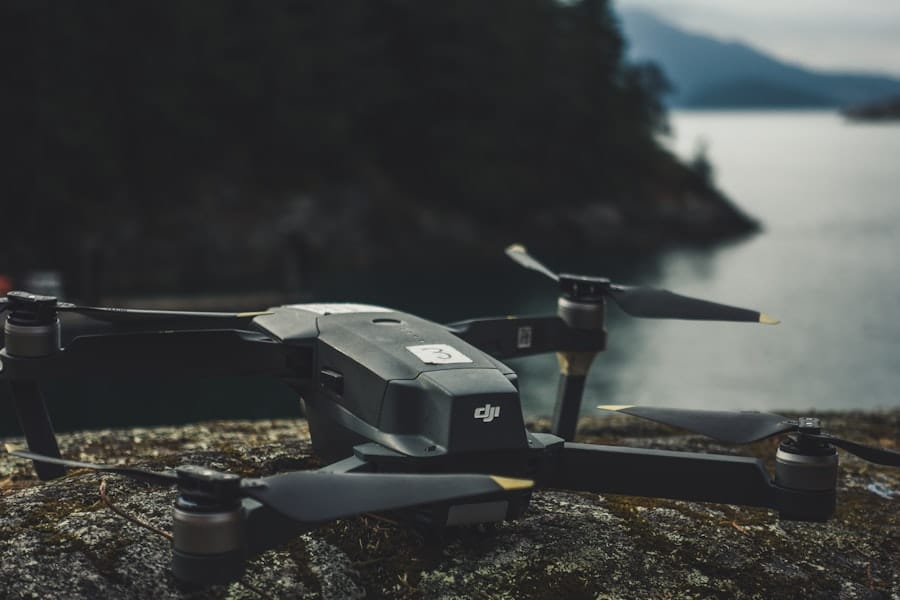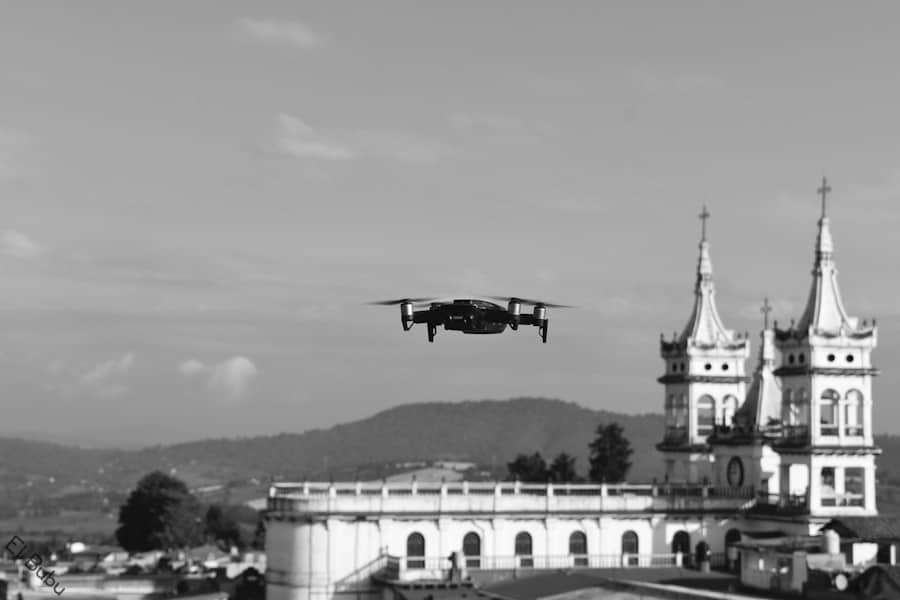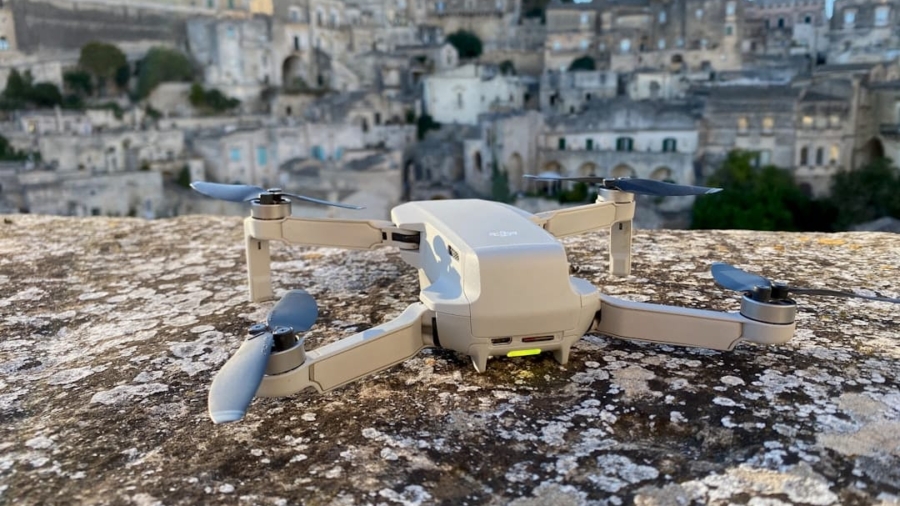The concept of drone taxis, or air taxis, has emerged as a revolutionary idea in urban transportation, promising to reshape the way people navigate congested city landscapes. As urban populations continue to swell, traditional ground-based transportation systems are increasingly strained, leading to traffic congestion, longer commute times, and a growing demand for innovative solutions. Drone taxis offer a potential remedy by utilizing vertical takeoff and landing (VTOL) technology to transport passengers swiftly above the gridlocked streets.
This aerial mode of transport not only aims to alleviate congestion but also seeks to provide a more efficient and environmentally friendly alternative to conventional vehicles. The allure of drone taxis lies in their ability to bypass terrestrial obstacles, offering a direct route from point A to point Major cities around the world are exploring this technology, with companies like Uber Elevate, Volocopter, and Joby Aviation leading the charge. These companies envision a future where drone taxis are as commonplace as ride-sharing services, providing on-demand aerial transport that can significantly reduce travel times.
Key Takeaways
- Drone taxis have the potential to revolutionize urban transportation by providing a faster and more efficient mode of travel.
- Current challenges and limitations of drone taxis include battery life, air traffic management, and public acceptance.
- Advantages of drone taxis in urban transportation include reduced traffic congestion, lower emissions, and faster travel times.
- Technological innovations in the drone taxi industry, such as improved battery technology and autonomous flight systems, are driving the development of this transportation mode.
- Regulatory and safety considerations are crucial for the successful integration of drone taxis into urban transportation, including air traffic control systems and public safety measures.
Current Challenges and Limitations of Drone Taxis
Despite the promising potential of drone taxis, several challenges and limitations hinder their widespread adoption. One of the most significant obstacles is the technological limitations associated with battery life and payload capacity. Current electric vertical takeoff and landing (eVTOL) aircraft typically have limited range and can only carry a small number of passengers or cargo.
For instance, many prototypes are designed for short-distance travel, often not exceeding 30 miles on a single charge. This limitation poses a challenge for urban areas where longer distances may be required for effective transportation. Moreover, the infrastructure necessary to support drone taxi operations is still in its infancy.
Urban environments require designated takeoff and landing zones, which must be strategically located to ensure accessibility and safety. The integration of these zones into existing cityscapes presents logistical challenges, particularly in densely populated areas where space is at a premium. Additionally, the need for air traffic management systems capable of handling increased aerial traffic adds another layer of complexity.
Current air traffic control systems are primarily designed for traditional aircraft and may not be equipped to manage the unique demands posed by a fleet of drone taxis operating in urban airspace.
Advantages and Opportunities of Drone Taxis in Urban Transportation

The advantages of drone taxis extend beyond mere convenience; they offer transformative opportunities for urban transportation systems. One of the most compelling benefits is the potential for reduced travel times. By taking to the skies, drone taxis can circumvent ground traffic, allowing passengers to reach their destinations more quickly.
For example, a journey that might take an hour by car during peak traffic could potentially be reduced to mere minutes in a drone taxi. This time-saving aspect is particularly appealing for business travelers or individuals with time-sensitive commitments. In addition to efficiency, drone taxis can contribute to enhanced accessibility in urban areas.
Many cities struggle with public transportation systems that do not adequately serve all neighborhoods, particularly those that are underserved or isolated. Drone taxis could provide a flexible solution, offering on-demand service that can reach areas lacking robust transit options. This capability could empower residents in remote or underserved communities by providing them with greater mobility and access to essential services such as healthcare, education, and employment opportunities.
Technological Innovations and Developments in Drone Taxi Industry
The drone taxi industry is witnessing rapid technological advancements that are paving the way for its future viability. Innovations in battery technology are particularly crucial, as they directly impact the range and efficiency of eVTOL aircraft. Companies are investing heavily in research to develop lighter, more efficient batteries that can sustain longer flights while carrying heavier payloads.
For instance, solid-state batteries are being explored as a potential game-changer due to their higher energy density compared to traditional lithium-ion batteries. In addition to battery improvements, advancements in autonomous flight technology are also critical for the success of drone taxis. Many companies are developing sophisticated algorithms and artificial intelligence systems that enable drones to navigate complex urban environments safely.
These technologies allow for real-time obstacle detection and avoidance, ensuring that drone taxis can operate safely alongside traditional aircraft and other aerial vehicles. Furthermore, advancements in communication technologies, such as 5G networks, will facilitate seamless connectivity between drones and ground control systems, enhancing operational efficiency and safety.
Regulatory and Safety Considerations for Integrating Drone Taxis into Urban Transportation
The integration of drone taxis into urban transportation raises significant regulatory and safety considerations that must be addressed before widespread deployment can occur. Regulatory frameworks governing airspace usage will need to evolve to accommodate the unique characteristics of drone operations. This includes establishing guidelines for flight paths, altitude restrictions, and no-fly zones to ensure safe coexistence with existing air traffic.
Safety is paramount in any transportation system, and drone taxis are no exception. The potential for accidents or malfunctions raises concerns about passenger safety and public perception. Rigorous testing protocols must be established to evaluate the reliability of drone systems under various conditions.
Additionally, emergency response plans must be developed to address potential incidents involving drone taxis, ensuring that appropriate measures are in place to protect both passengers and bystanders.
Potential Impact of Drone Taxis on Urban Mobility and Infrastructure

The introduction of drone taxis has the potential to significantly impact urban mobility patterns and infrastructure development. As aerial transportation becomes more prevalent, cities may need to rethink their existing transportation frameworks. The demand for ground-based vehicles could decrease as more individuals opt for aerial alternatives, leading to reduced congestion on roads and highways.
This shift could also influence urban planning decisions, prompting cities to prioritize vertical development over horizontal expansion. Moreover, the integration of drone taxis could lead to the creation of new infrastructure dedicated to aerial transport. Vertiports—designated takeoff and landing areas for drones—may become common features in urban landscapes, similar to how airports function today.
These vertiports would need to be strategically located near major transit hubs or high-density areas to maximize accessibility. The development of such infrastructure could also stimulate economic growth by creating jobs related to construction, maintenance, and operation of drone taxi services.
Economic and Environmental Benefits of Incorporating Drone Taxis into Urban Transportation
Incorporating drone taxis into urban transportation systems presents numerous economic benefits that extend beyond mere convenience for commuters. The potential for job creation is significant; as the industry grows, new roles will emerge in areas such as engineering, piloting (for non-autonomous models), maintenance, and air traffic management specific to drones. Furthermore, the establishment of vertiports and related infrastructure could stimulate local economies by attracting businesses that cater to passengers using these services.
From an environmental perspective, drone taxis offer a more sustainable alternative to traditional ground transportation methods. Many eVTOL designs prioritize electric propulsion systems that produce zero emissions during operation. As cities grapple with air quality issues and climate change concerns, adopting cleaner modes of transport like drone taxis could contribute positively to urban sustainability goals.
Additionally, by reducing reliance on fossil fuel-powered vehicles, cities could see a decrease in greenhouse gas emissions associated with transportation.
Future Outlook and Potential Scenarios for the Integration of Drone Taxis into Urban Transportation
Looking ahead, the future of drone taxis in urban transportation is filled with possibilities shaped by technological advancements, regulatory developments, and societal acceptance. One potential scenario involves gradual integration into existing transportation networks through pilot programs in select cities. These programs would allow stakeholders to assess operational feasibility while gathering data on passenger preferences and safety outcomes.
Another scenario envisions a fully autonomous fleet of drone taxis operating seamlessly within urban airspace alongside traditional aircraft. In this future landscape, passengers may simply summon a drone taxi via an app on their smartphones, experiencing a level of convenience akin to current ride-sharing services but with the added benefit of aerial travel. As public acceptance grows and regulatory frameworks adapt to accommodate this new mode of transport, drone taxis could become an integral part of urban mobility solutions worldwide.
In conclusion, while challenges remain in the path toward widespread adoption of drone taxis in urban transportation systems, the potential benefits they offer are substantial. From reducing congestion and enhancing accessibility to creating economic opportunities and promoting environmental sustainability, drone taxis represent a forward-thinking approach to addressing the complexities of modern urban mobility.
As cities explore the integration of these aerial vehicles, it’s crucial to consider the technological advancements that support such innovations. A related article that delves into the technological tools shaping the future is the RankAtom Review: The Game-Changing Keyword Research Tool. This article highlights the importance of cutting-edge technology in driving forward-thinking solutions, much like the advancements needed for the successful implementation of drone taxis in urban environments.
FAQs
What are drone taxis?
Drone taxis are small, unmanned aerial vehicles designed to transport passengers from one location to another within urban areas.
How do drone taxis work?
Drone taxis are equipped with electric motors and batteries, and are controlled remotely or autonomously. They take off and land vertically, and can fly at low altitudes to avoid other air traffic.
What are the benefits of using drone taxis in urban transportation?
Drone taxis have the potential to reduce traffic congestion, lower carbon emissions, and provide faster and more efficient transportation within cities. They can also reach areas that are difficult to access by traditional means of transportation.
What are the challenges of implementing drone taxis in urban areas?
Challenges include regulatory approval, safety concerns, public acceptance, infrastructure development, and the integration of drone taxis into existing air traffic management systems.
Which companies are developing drone taxis?
Several companies, including Uber, Volocopter, Ehang, and Airbus, are actively developing and testing drone taxi prototypes for urban transportation.
When can we expect to see drone taxis in operation?
While some cities have conducted test flights and trials, widespread commercial operation of drone taxis in urban areas is still several years away. Regulatory approval and infrastructure development are key factors in determining the timeline for implementation.

